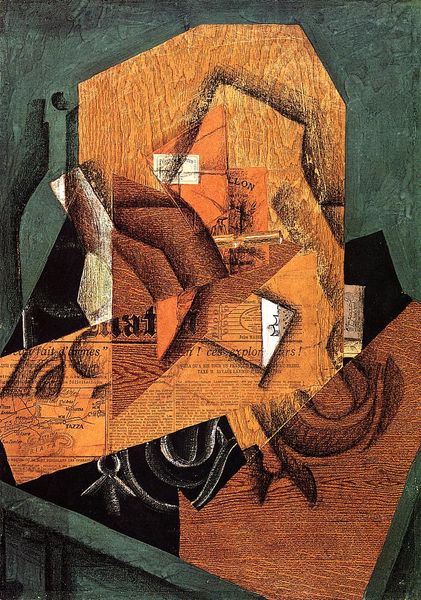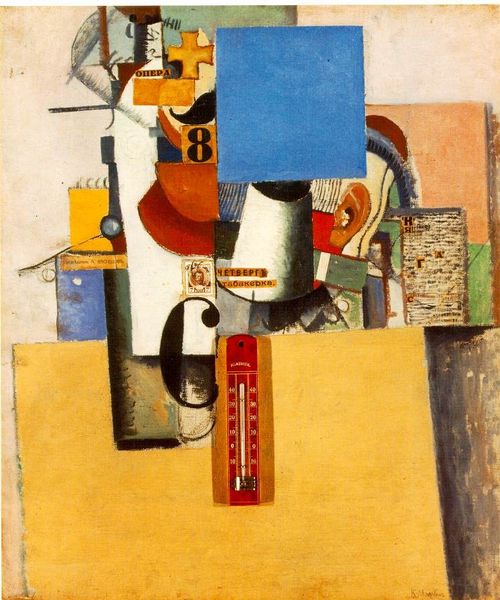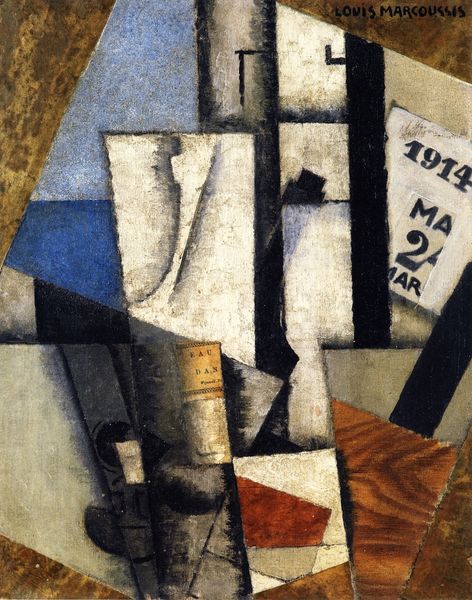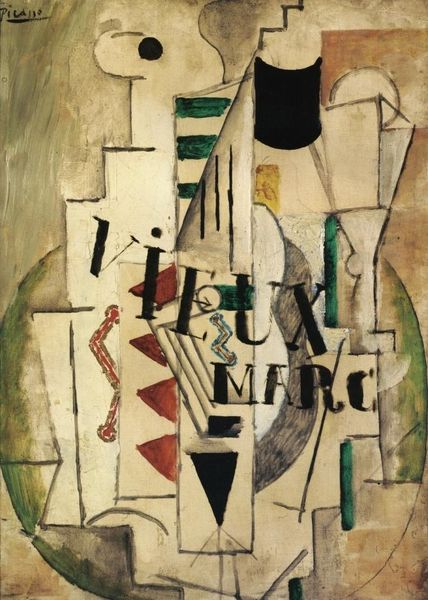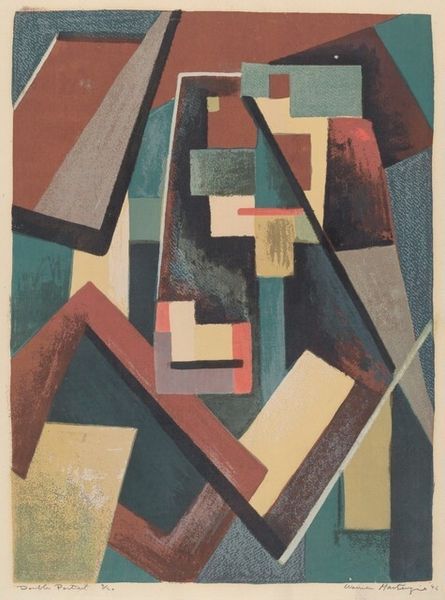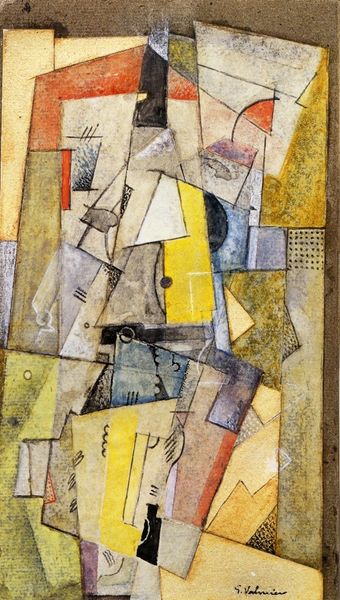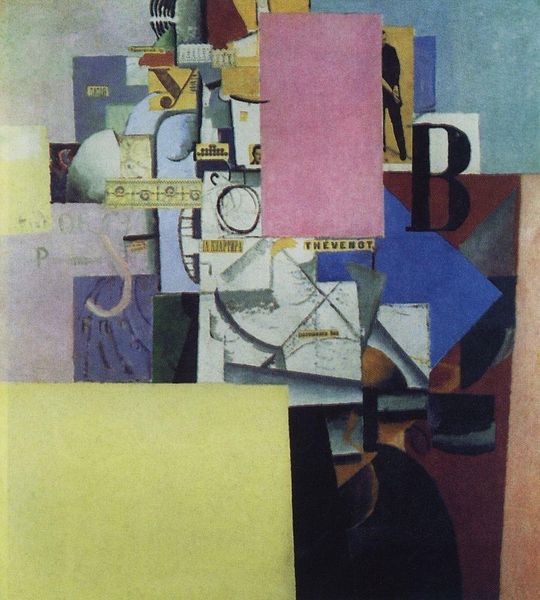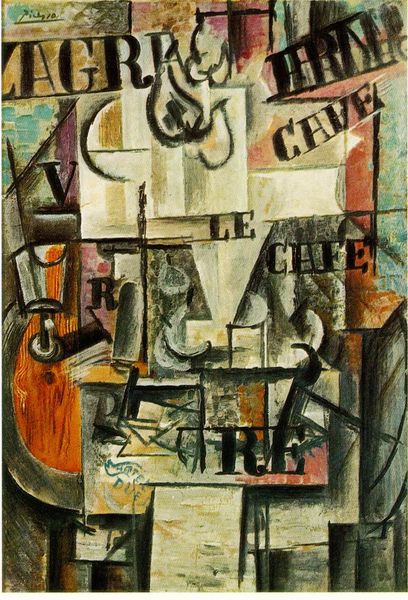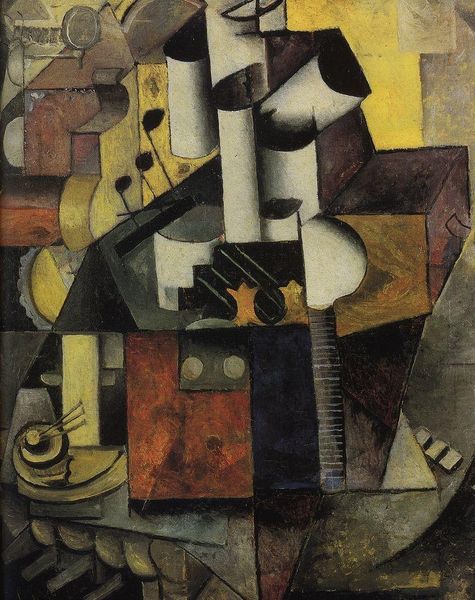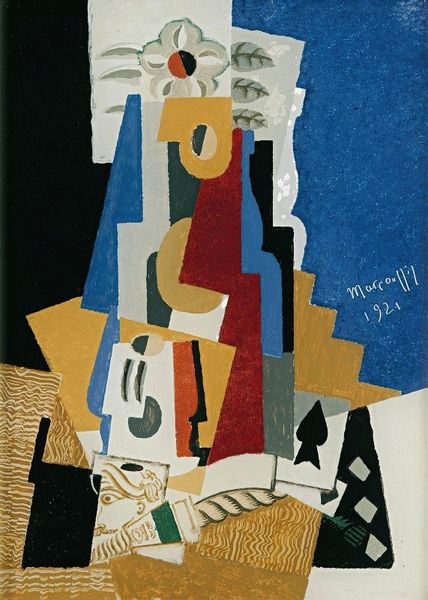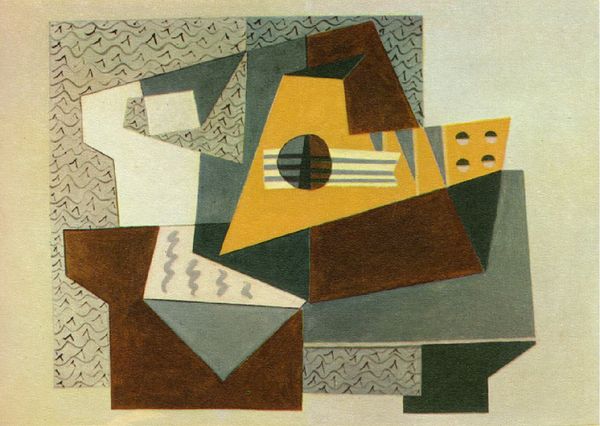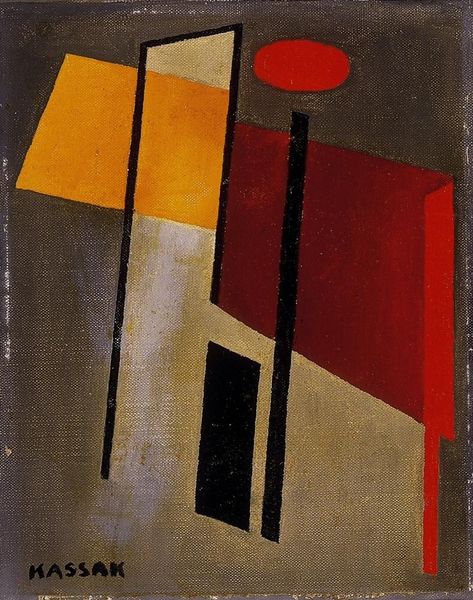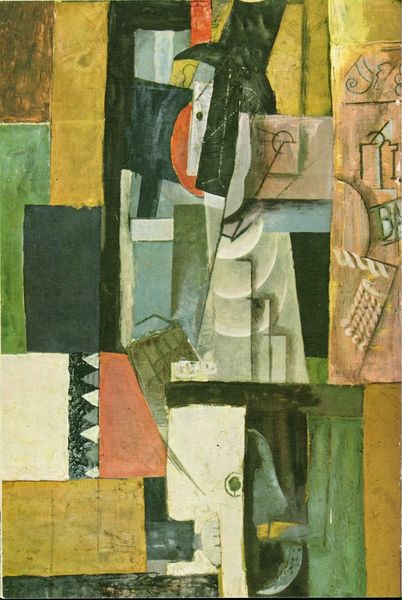
Still life with violin and fruits 1912
0:00
0:00
pablopicasso
Philadelphia Museum of Art, Philadelphia, PA, US
#
table
#
toned paper
#
pasteup
#
water colours
#
handmade artwork painting
#
fruit
#
spray can art
#
underpainting
#
men
#
painting painterly
#
watercolour bleed
#
watercolour illustration
#
watercolor
Dimensions: 64 x 49.5 cm
Copyright: Public domain US
Editor: This is Picasso’s “Still life with violin and fruits” from 1912. It's a mixed media piece – a collage with watercolour and other media. It feels fragmented, almost like a puzzle, but the textures and shapes are intriguing. What do you see in this work, especially regarding its context? Curator: The fragmentation you noticed is key. This piece represents a radical shift in art history. Think about the time: 1912, just before World War I. There's a growing sense of unease and a breakdown of traditional structures. Picasso's Cubism, and collage particularly, mirror this social and political upheaval. Editor: How so? It's just a still life, right? Curator: Not quite. Before Cubism, art was meant to represent reality in a clear, idealized way. But here, Picasso shatters that illusion. The violin, fruits, newspaper, are all depicted from multiple viewpoints simultaneously, challenging the viewer's perception. It’s almost anti-establishment. Notice how he incorporates elements of everyday life - the newspaper clippings- into what was a "high art" genre? Editor: Ah, I see! The use of newspaper disrupts the refined image of a typical still life. But what does it signify? Curator: Well, mass media became prevalent around that period. Therefore incorporating printed material made artworks relatable to common viewers. Do you believe that by merging them into artwork Picasso invited regular people into museums and galleries to explore art? Editor: That's fascinating. So, he wasn't just depicting objects, but also commenting on society. Thanks, it completely changed the way I perceived collage. Curator: Indeed. By decentering perspective and referencing contemporary mass culture, Picasso questioned the role of art and the very nature of representation within a rapidly changing world. And hopefully expanded his audiences.
Comments
No comments
Be the first to comment and join the conversation on the ultimate creative platform.

